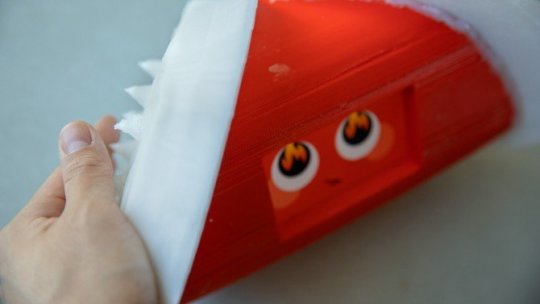Cornell University researchers have developed a prototype of a robot that can express “emotions” through changes in its outer surface. The robot’s skin covers a grid of texture units whose shapes change based on the robot’s feelings.
Assistant professor of mechanical and aerospace engineering Guy Hoffman, who has given a TEDx talk on “Robots with ‘soul'” said the inspiration for designing a robot that gives off nonverbal cues through its outer skin comes from the animal world, based on the idea that robots shouldn’t be thought of in human terms, according to Science Daily.
“I’ve always felt that robots shouldn’t just be modeled after humans or be copies of humans,” he said. “We have a lot of interesting relationships with other species. Robots could be thought of as one of those ‘other species,’ not trying to copy what we do but interacting with us with their own language, tapping into our own instincts.”
Hoffman and Hu’s design features an array of two shapes, goosebumps and spikes, which map to different emotional states. The actuation units for both shapes are integrated into texture modules, with fluidic chambers connecting bumps of the same kind.
The team tried two different actuation control systems, with minimizing size and noise level a driving factor in both designs. “One of the challenges,” Hoffman said, “is that a lot of shape-changing technologies are quite loud, due to the pumps involved, and these make them also quite bulky.”
Hoffman does not have a specific application for his robot with texture-changing skin mapped to its emotional state. At this point, just proving that this can be done is a sizable first step. “It’s really just giving us another way to think about how robots could be designed,” he said.
Future challenges include scaling the technology to fit into a self-contained robot — whatever shape that robot takes — and making the technology more responsive to the robot’s immediate emotional changes.
“At the moment, most social robots express [their] internal state only by using facial expressions and gestures,”. “We believe that the integration of a texture-changing skin, combining both haptic [feel] and visual modalities, can thus significantly enhance the expressive spectrum of robots for social interaction.”
N.H.Kh

